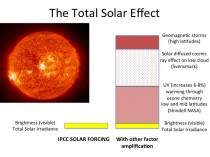Climate Models That Predict More Droughts Win Further Scientific Support
By Hristio Boytchev, Published: August 13The Washington Post
The United States will suffer a series of severe droughts in the next two decades, according to a new study published in the journal Nature Climate Change. Moreover, global warming will play an increasingly important role in their abundance and severity, claims Aiguo Dai, the study’s author and newly appointed Associate Professor at the University at Albany, Department of Atmospheric and Environmental Sciences beginning September 1st.
His findings bolster conclusions from climate models used by researchers around the globe that have predicted severe and widespread droughts in coming decades over many land areas. Those models had been questioned because they did not fully reflect actual drought patterns when they were applied to conditions in the past. However, using a statistical method with data about sea surface temperatures, Dai, a climate researcher at the federally funded National Center for Atmospheric Research, found that the model accurately portrayed historic climate events.
“We can now be more confident that the models are correct,” Dai said, “but unfortunately, their predictions are dire.”
In the United States, the main culprit currently is a cold cycle in the surface temperature of the eastern Pacific Ocean. It decreases precipitation, especially over the western part of the country. “We had a similar situation in the Dust Bowl era of the 1930s,” said Dai, who works at the research center’s headquarters in Boulder, Colo.
While current models cannot predict the severity of a drought in a given year, they can assess its probability. “Considering the current trend, I was not surprised by the 2012 drought,” Dai said.
The Pacific cycle is expected to last for the next one or two decades, bringing more aridity. On top of that comes climate change. “Global warming has a subtle effect on drought at the moment,” Dai said, “but by the end of the cold cycle, global warming might take over and continue to cause dryness.”
While the variations in sea temperatures primarily influence precipitation, global warming is expected to bring droughts by increasing evaporation over land. Additionally, Dai predicts more dryness in South America, Southern Europe and Africa.
“The similarity between the observed droughts and the projections from climate models here is striking,” said Peter Cox, a professor of climate system dynamics at Britain’s University of Exeter, who was not involved in Dai’s research. He said he also agrees that the latest models suggest increasing drought to be consistent with man-made climate change.
ICECAP NOTE: The AGW role is nonsense. and he only has it half right (the Atlantic AMO is also important - probably more so).





